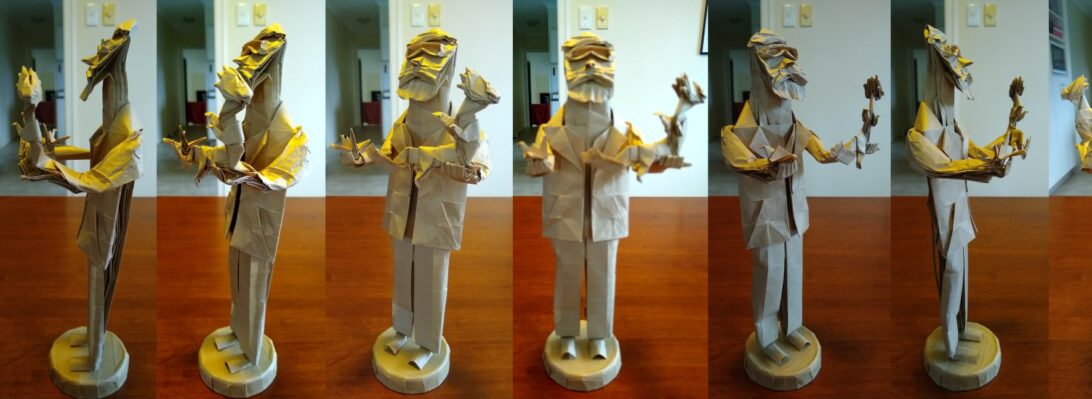So I have more or less committed to another 365 Origami challenge. This is not a decision I have taken lightly (unlike the last time, in 2011, where I had NO IDEA what I was getting into).
For those unfamiliar with the concept (as I see it), I will endeavour to fold a different Origami Model every day this year – 2017. As in 2011 I will ensure that the models are things I have NEVER folded before.
Some models will be simple, some less so and others far from it. Time permitting I will do a mix. Check the tags for the designer, sheet shape, base (if any) and the duration of the fold.
My nomenclature this time around is complex. I was up to novel model 550, so the current 365 series will look a little like 551 (1/365), 562 (12/365) and so on – keeping track of both numbering systems is a pain I know but…reasons. It will also seamlessly allow me to continue folding and blogging after the challenge with continuity. Remember, only models I have never folded before get a number, so from time to time there will also be un-numbered posts.
This blog posts automatically to Fakebook so friends get a headsup when the day’s model is up. I am trying to be strategic also this time around, and have a number of models in reserve, folded and ready to go for those times when it gets busy, or I am away, or whatever.
Last time, in 2011, the journey was interesting, I learned a lot and the business helped me be more productive in other areas of my life – I am hoping for similar flow-on benefits, along with a further growth in my skills.
Please feel free to leave comments. I will probably also Auction off selections of this catalogue for charity as I did last time around – we shall see.
















